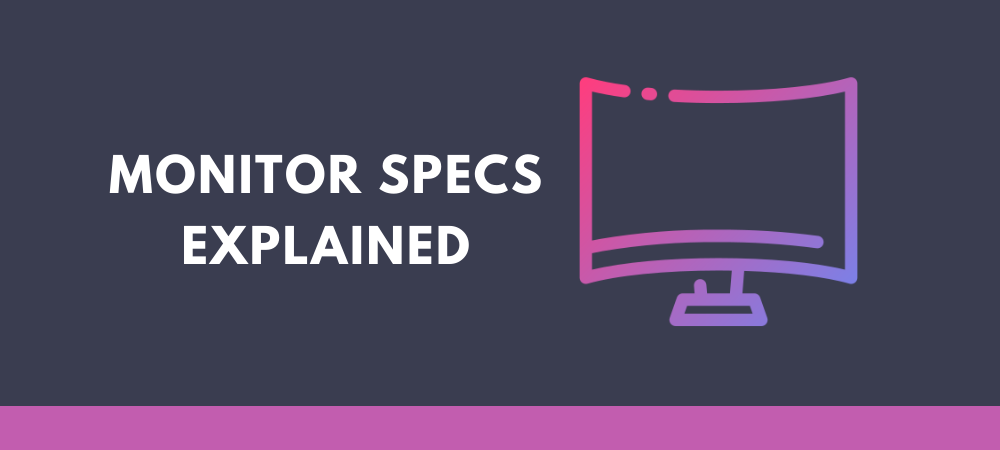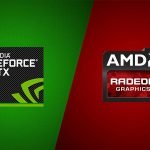When building or upgrading their PCs, most people pay attention to only hardware components like processor, graphics card, and RAM.
While each of them is important in its own right, you shouldn’t skip on peripherals such as mouse, keyboard, and monitor.
Monitor, in particular, is important because this is where the graphics rendered by your GPU will be displayed. No matter how powerful gaming PC you’ve built, your experience will suck if the monitor is not up for the job.
And it’s not just related to gaming only. A good monitor is important even if you do multimedia consumption or content creation.
But if you’ve ever searched online about them, you’ll know that monitor market is quite saturated and you can’t differentiate among them only on the bases of their screen sizes.
To help you out, below we’ll discuss 8 important specs you need to look at while choosing a monitor.
1. Screen Size and Resolution
The first thing you’ll notice in any monitor is its screen size. Monitors come with a ton of different screen sizes but the most common ones range from 24 to 34 inches.
But screen size can’t be used as standalone metric and you have to consider the screen resolution as well.
Each monitor display is made up of millions of pixels and the total number of pixels define its screen resolution.
Although monitors come in a wide range of resolutions, most common one is the 1920×1080.
A higher resolution gives you more detail which in turn makes the screen elements look more sharper.
But it also depends on pixel density and screen size. A 25-inch monitor with 1920×1080 resolution will have more pixel density than a 32-inch monitor with same resolution, and will give you better performance therefore.
2. Aspect Ratio
Aspect ratio of a monitor is related to its size and resolution. It’s a proportional representation of a screen’s width and height, and can be measured by its resolution. For example, the 1920×1080 resolution has an aspect ratio of 16:9 (1920/1080 = 16:9).
That being said, some monitors come with less common aspect ratios, such as 21:9 and 32:9. Some laptops have 16:10 ratio these days as it increases their screen height, making them suitable for vertical form of content (twitter, facebook etc.).
3. Refresh Rate
The refresh rate is the number of times a screen can be updated and redrawn in one second. Since GPU renders graphics in the form of images/frames, higher refresh rate means higher number of frames can be displayed in one second – making your gameplay smoother.
Monitors used to feature 60Hz refresh rate for many years, but now we’re seeing 120Hz, 144Hz, and even 240Hz monitor in the markets.
One important thing you need to know is that high refresh rate also puts more burden on your graphics card.
So if you’re panning to play your favorite game at 240Hz, you must have a capable GPU beforehand. It also means that you don’t need to pay much attention to this feature if gaming is not your focus.
4. Response Time
Response rate is the time a pixel takes to complete its color transition. In fast-paced FPS games, screen transition happens quickly. And if your monitor can’t change color as fast as a game demands, you get trailing objects or some artifacts of a previous frame.
This is the reason why most gaming monitors come with 5ms response time or better.
Like refresh rate, response time’s utility is limited to gaming and you don’t need it for non-gaming tasks like document management, web browsing, or Netflix binge watching.
5. Viewing Angles
Viewing angles refer to the angles from which you can view a screen without it showing any color contrast.
Although it’s not as important for a single person, it can be handy if you’re in a collaborative environment and showcase your work to your peers. Most high-end displays come with 178° viewing angles these days, but anything above 170° will be good.
6. Panel Type
Except a few high-end OLED displays, majority of the monitors around us come with LCD technology. This technology is further divided into three different panel types: TN, IPS, and VA.
TN panels provide higher refresh rate and low response time, making them ideal for gaming. Their main issue is poor viewing angles.
On the other hand, IPS panels are known for their color accuracy and viewing angles. That’s why they’re preferred for stuff like photo or video editing. Their main downsides are average contrast ratio, slow response time, and higher cost.
Lastly, we have the VA panels. You can think of them as a bridge between the IPS and TN technologies. This is the reason why they have good contrast ratios and viewing angles but suffer from poor response time and ghosting issues.
7. Contrast Ratio
Contrast ratio is the ratio of brightest whites and darkest blacks a screen can produce. In other words, it’s the measurement of how black or white a display screen can be. It’s represented by a ratio such as 1000:1.
Although some monitors have as high as 3000:1 contrast ratio these days, you should aim for at least 1000:1, especially if you want to place your monitor in a darker room.
8. Ports
Lastly, we have the monitor ports.
Until a few years ago, monitors used to come up with only VGA and DVI-D ports. But now we’re getting HDMI, DisplayPort, and USB-C port as well.
And to make matters complicated, each of these standards have multiple versions that effect the overall monitor performance.
For example, the DisplayPort 1.2 can handle 1080p and 1440p resolution but not 4K. For 4K, you’ll need DisplayPort 1.4 port. It can handle 8K at 60Hz and 4K at up to 200Hz.
Same is the case with HDMI. While you can use HDMI 1.4 for 4K resolution, you’ll only get 30 fps which is only good for movies. For gaming at 60Hz, you’ll need at least HDMI 2.0.
All in all, make sure to check its port-compatibility with your system before going for any monitor.



